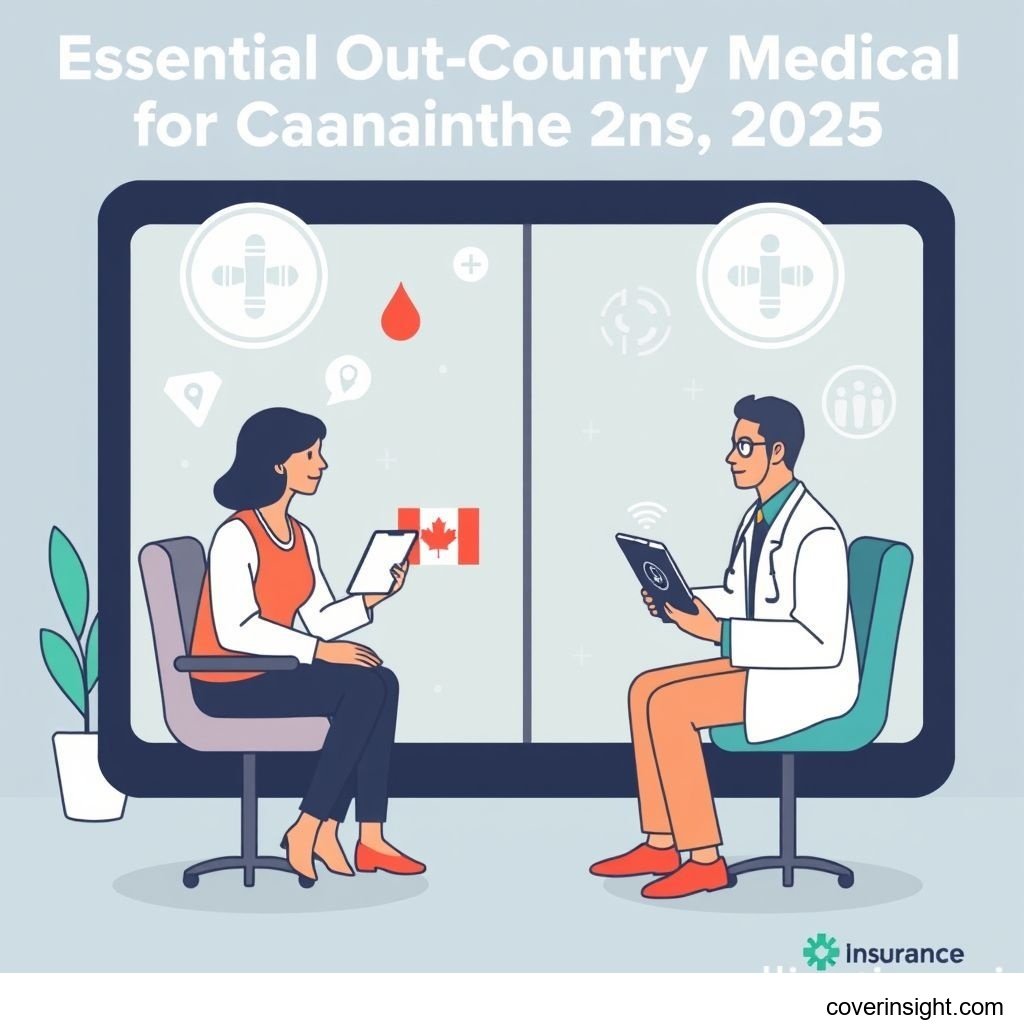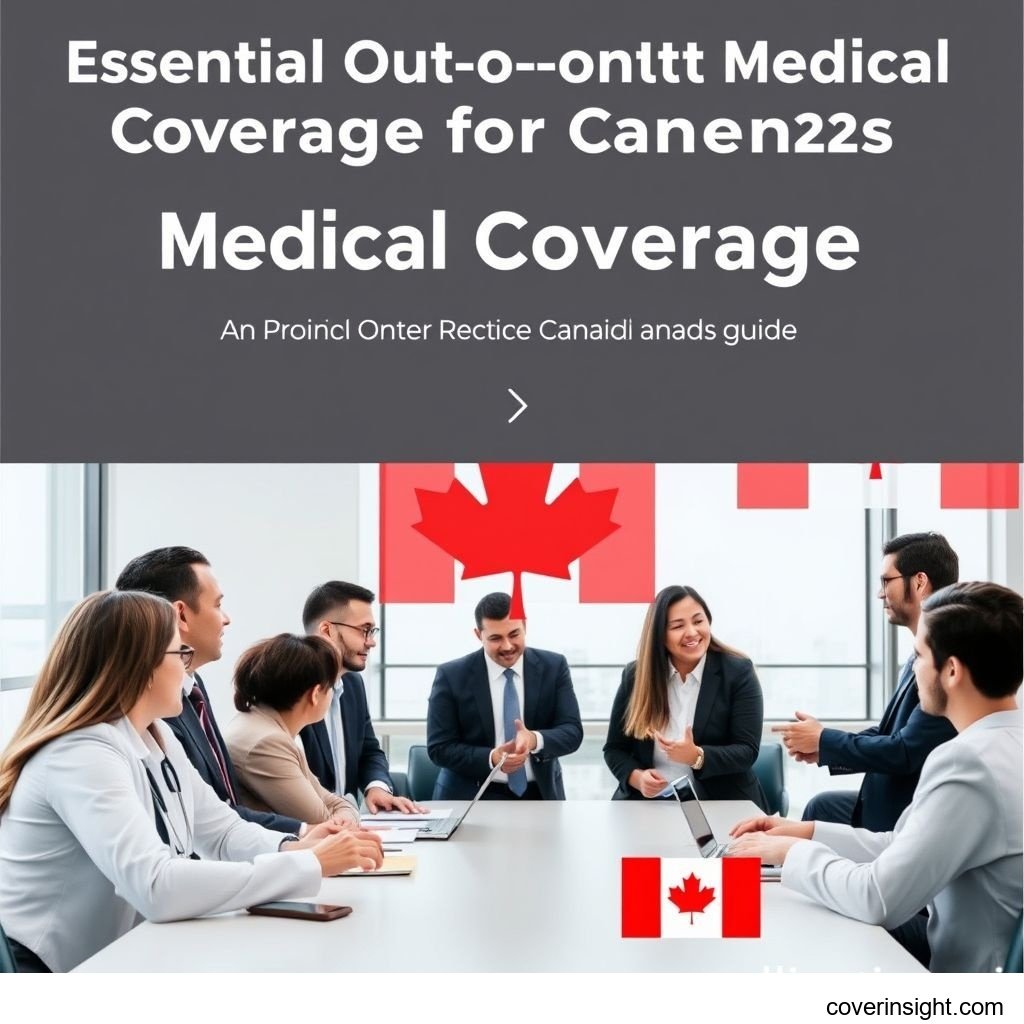Essential Out-of-Country Medical for Canadians 2025
Introduction
In 2025, navigating the complexities of healthcare, especially when travelling abroad, remains a critical concern for Canadians. While provincial health plans provide essential coverage within Canada, they offer limited protection for medical emergencies encountered outside the country. This is where robust group health insurance plans become indispensable. For many Canadian employees, understanding the nuances of their employer-sponsored benefits is paramount to ensuring adequate financial and medical security during international trips. This comprehensive guide will illuminate the crucial aspects of out-of-country medical coverage, detailing what’s covered, what’s not, and how to optimize your plan for peace of mind.
Understanding Your Group Health Insurance for Travel
When planning an international trip, the excitement of discovery often overshadows the crucial need for proper medical preparation. Canadian provincial health plans, including OHIP, MSP, AHCIP, etc., offer minimal coverage for healthcare costs incurred outside Canada. This gap makes supplementary insurance, particularly through group health insurance benefits, an absolute necessity.
The Imperative of Out-of-Country Coverage
Medical emergencies abroad can be staggeringly expensive. A simple doctor's visit, an ambulance ride, or emergency surgery can quickly rack up bills into the tens or even hundreds of thousands of dollars. Without adequate protection, these costs fall directly on the individual, leading to significant financial distress. Travel insurance, often a component of comprehensive group health insurance plans, bridges this gap, covering emergency medical treatments, hospitalization, and even medical evacuation back to Canada. It’s not just about covering big emergencies; it’s about having a safety net for any unexpected health issue that may arise far from home.
How Group Health Insurance Supplements Provincial Plans
Your employer-provided group health insurance is designed to complement, not replace, your provincial healthcare. While provincial plans might cover a tiny fraction of out-of-country medical costs (e.g., $50-$400 CAD per day for inpatient hospital services, depending on the province), they are woefully insufficient for actual costs in countries like the U.S. or even Europe. Group health insurance steps in to cover the vast majority of these expenses, providing comprehensive protection. This can include:
-
Emergency room visits
-
Doctor consultations
-
Prescription drugs (emergency supply)
-
Hospital stays
-
Medical repatriation
-
Emergency dental services
Many companies structure their group health insurance to include robust travel medical benefits, recognizing the importance of employee well-being, even when they are on vacation or business trips abroad.
Navigating OHIP Coverage Changes and Out-of-Country Medical Needs
The landscape of provincial healthcare coverage for out-of-country emergencies has seen significant shifts, particularly concerning OHIP coverage changes. These changes underscore the critical importance of private supplementary insurance.
Recent Changes to OHIP Coverage Abroad
As of January 1, 2020, Ontario's provincial health insurance plan (OHIP) ceased providing coverage for emergency out-of-country medical expenses, with very limited exceptions. While some provinces like Quebec and British Columbia still offer modest out-of-country coverage, the general trend across Canada is towards reduced or eliminated provincial support for international medical emergencies. These OHIP coverage changes highlight a broader shift, emphasizing that Canadians should not rely on their provincial plans for any significant financial relief abroad. This policy adjustment was a wake-up call for many, emphasizing the need for personal responsibility in securing travel medical insurance.
Filling the Gaps: Why Supplemental Insurance is Key
Given the minimal or non-existent provincial coverage, comprehensive private out-of-country medical insurance, often accessed through an employer's group health insurance plan, becomes non-negotiable. This supplemental coverage ensures that you are protected against unforeseen medical events, ranging from minor ailments to critical care needs. Relying solely on the default provincial offerings leaves individuals exposed to potentially bankrupting medical bills. The smart approach is to review your current group health insurance plan's travel provisions and, if necessary, consider purchasing additional standalone travel insurance to cover any remaining gaps or specific needs, such as pre-existing conditions or longer trip durations. This proactive measure is vital for anyone planning to cross borders.
Coverage Details of Out-of-Country Medical Benefits
Understanding what your out-of-country medical policy includes and, equally important, what it excludes, is fundamental to effective travel preparation.
What’s Typically Included
Most comprehensive group health insurance plans offering out-of-country medical benefits will cover a wide array of emergency medical services. While specific benefits can vary, common inclusions often feature:
-
Emergency Hospitalization: Covers charges for a hospital room, board, and nursing care.
-
Physician Services: Fees for doctors, surgeons, and specialists.
-
Diagnostic Services: Costs for X-rays, lab tests, and other diagnostic procedures.
-
Prescription Drugs: Emergency supplies of medications, typically up to a certain limit.
-
Ambulance Services: Ground, air, or sea ambulance transport to the nearest appropriate medical facility.
-
Medical Evacuation: Coverage for transportation to the nearest hospital or back to Canada, if medically necessary.
-
Repatriation of Remains: In the unfortunate event of death, covers costs for preparing and transporting remains home.
-
Emergency Dental Treatment: Limited coverage for acute dental pain or accidental injury to natural teeth.
Many plans also offer a 24/7 emergency assistance hotline, connecting you with medical professionals and support services, which can be invaluable when navigating an unfamiliar healthcare system.
Common Exclusions
While essential, out-of-country medical insurance isn't a blank cheque. It's crucial to be aware of common exclusions that could impact your coverage:
-
Pre-existing Conditions: Often, policies exclude coverage for conditions that were not stable for a certain period (e.g., 90-180 days) before your departure. Always declare pre-existing conditions and clarify how they are covered.
-
Elective Procedures: Cosmetic surgery or non-emergency treatments are typically not covered.
-
High-Risk Activities: Injuries sustained during adventure sports (e.g., skydiving, scuba diving, mountaineering) might be excluded unless an additional rider is purchased.
-
Alcohol or Drug-Related Incidents: Injuries or illnesses resulting from alcohol or drug abuse are generally not covered.
-
Illegal Acts: Medical expenses incurred while engaging in illegal activities.
-
Travel Advisories: Travel to regions with official government "avoid all travel" advisories may void coverage.
-
Mental Health: Some policies may have limitations or exclusions for mental health conditions or treatments.
-
Regular Check-ups or Follow-up Care: The coverage is for emergencies only, not routine medical appointments.
Always read your policy document thoroughly, paying close attention to the fine print, especially regarding stability clauses for pre-existing conditions and specific exclusions. If you have any doubts, contact your group health insurance provider directly.
Cost Analysis of Group Health Insurance Plans
The cost of group health insurance, particularly with robust out-of-country benefits, is a key consideration for both employers and employees. Understanding the factors that influence premiums can help in making informed decisions.
Price Factors for Group Health Insurance
Several elements contribute to the overall cost of a group health insurance plan. These factors are carefully assessed by insurers to determine the risk profile of the group and, consequently, the premium rates.
-
Group Size and Demographics: Larger groups often benefit from economies of scale. The age, gender, and general health of the employee base also play a significant role. A younger, healthier workforce typically leads to lower premiums.
-
Coverage Levels and Benefits: Plans with extensive coverage, higher maximum limits (e.g., $5 million vs. $1 million for out-of-country emergencies), and a wider range of covered services will naturally cost more.
-
Deductibles and Co-insurance: Plans with higher deductibles (the amount you pay before insurance kicks in) or co-insurance (a percentage of costs you pay) usually have lower premiums.
-
Claim History: For existing groups, past claims experience can influence future premiums. A group with a high claims history may see premium increases.
-
Industry and Risk: Certain industries might be associated with higher health risks, which can be reflected in premium calculations.
-
Geographic Scope: If a plan includes worldwide coverage versus just North America, it will impact the cost.
Understanding these factors allows employers to tailor their group health insurance offerings to balance comprehensive coverage with budgetary constraints.
Strategies for Cost Savings
While securing adequate group health insurance is crucial, there are strategies employers can employ to manage costs without compromising essential coverage for their employees:
-
Shop Around and Compare Quotes: Engage with multiple brokers and insurers to get competitive quotes. The market for group health insurance is dynamic, and rates can vary significantly.
-
Review Plan Design Annually: Regularly assess whether the current benefits meet the actual needs of the workforce. Adjusting deductibles, co-insurance, or benefit maximums can lead to savings.
-
Promote Employee Wellness Programs: A healthier workforce generally means fewer claims. Investing in wellness initiatives, such as smoking cessation, stress management, or fitness programs, can lead to long-term premium reductions.
-
Consider a Health Spending Account (HSA): HSAs can offer employees flexibility in covering out-of-pocket expenses, allowing employers to offer a slightly leaner core plan while still providing valuable benefits.
-
Educate Employees on Wise Use: Encourage employees to use in-network providers when possible (for domestic claims) and understand their out-of-country benefits thoroughly to avoid unnecessary claims or confusion.
-
Negotiate with Providers: For large groups, there may be opportunities to negotiate directly with insurers on renewal terms.
Choosing the Right Group Health Insurance Provider
Selecting the ideal group health insurance provider involves more than just comparing price tags. It requires a holistic evaluation of services, support, and long-term value.
Key Considerations When Selecting a Plan
When evaluating group health insurance options for 2025, employers and employees should look beyond the basic premium. Here's what to consider:
-
Reputation and Financial Stability: Choose an insurer with a strong track record and robust financial standing. Check ratings from agencies like A.M. Best or S&P.
-
Network of Providers: For out-of-country medical, inquire about their international assistance network. Do they have partnerships with medical facilities worldwide?
-
Claims Process Efficiency: A smooth, transparent, and timely claims process is paramount. Investigate their digital capabilities for claims submission and tracking.
-
Customer Service and Support: Assess the quality of their customer service. Are they responsive? Do they offer 24/7 emergency support for international travellers?
-
Policy Wording Clarity: The policy document should be easy to understand, clearly outlining inclusions, exclusions, and limitations.
-
Flexibility and Customization: Can the plan be tailored to the specific needs of your workforce? Do they offer optional riders for enhanced travel coverage?
-
Value-Added Services: Some providers offer wellness programs, online health resources, or dedicated account managers, which can add significant value.
The Importance of Comparing Quotes
Comparing multiple quotes for group health insurance is not just about finding the lowest price; it’s about finding the best value. Different insurers specialize in different group sizes or industries, and their underwriting philosophies vary. By comparing detailed proposals from several reputable providers, you can:
-
Identify the most competitive pricing for comparable benefits.
-
Uncover unique features or services offered by one insurer over another.
-
Negotiate better terms and conditions based on competitive offers.
-
Ensure that the proposed plan adequately covers specific employee needs, especially for out-of-country travel and the implications of OHIP coverage changes.
Engaging with an experienced insurance broker specializing in group health insurance can streamline this process. They have access to multiple providers and can provide expert advice tailored to your organization's specific requirements, ensuring you secure optimal coverage for 2025 and beyond. For more detailed insights, consider visiting Insurance Resources Global.
FAQs About Group Health Insurance
How Much Does Group Health Insurance Cost?
The cost of group health insurance varies widely. It depends on several factors, including the size and demographics of your group, the level of coverage chosen, the inclusion of benefits like out-of-country medical, and the deductible amounts. Smaller groups might pay more per employee than larger corporations due to less risk pooling. A comprehensive plan with extensive travel benefits will naturally cost more than a basic one. Annual premiums can range from a few hundred dollars to several thousand per employee per year.
What Factors Affect Group Health Insurance Premiums?
Premiums for group health insurance are influenced by:
-
Employee Age & Gender Distribution: Older employees generally lead to higher premiums.
-
Claim History: Groups with a history of high claims may see premium increases.
-
Industry Type: Certain industries (e.g., manual labour) might have higher health risks.
-
Benefit Design: More extensive coverage, lower deductibles, and higher maximums increase cost.
-
Inclusion of Specialized Benefits: Adding out-of-country medical or dental/vision increases the overall premium.
-
Geographic Location: Provincial variations in healthcare costs can also play a role.
Is Out-of-Country Medical Coverage Mandatory?
While no Canadian law explicitly mandates personal out-of-country medical insurance for leisure travel, it is highly recommended and, for many, a condition of employment through their group health insurance. As provincial health plans offer minimal or no coverage (especially with OHIP coverage changes), travelling without adequate private insurance leaves you financially vulnerable to potentially massive medical bills. For business travel, many employers do mandate it as part of their duty of care.
How Do I Choose the Best Plan?
Choosing the best group health insurance plan involves:
-
Assessing Needs: Understand the health needs and travel habits of your group.
-
Budgeting: Determine a realistic budget for premiums and out-of-pocket costs.
-
Comparing Features: Look beyond price to compare specific benefits, exclusions (especially for pre-existing conditions), and maximum coverage limits.
-
Checking Reputation: Select a financially stable insurer with good customer service.
-
Seeking Expert Advice: Consult with an experienced insurance broker to navigate options.
For general consumer information, the Financial Consumer Agency is a helpful resource.
What Are the Consequences of Not Having Adequate Coverage?
The consequences of not having adequate out-of-country medical coverage can be severe:
-
Immense Financial Debt: You could face medical bills ranging from thousands to hundreds of thousands of dollars for emergencies.
-
Delayed Treatment: Hospitals abroad may refuse treatment or demand upfront payment if you lack proof of insurance.
-
Repatriation Costs: The cost of medical evacuation back to Canada can exceed $100,000, not covered by provincial plans.
-
Lost Assets: In extreme cases, individuals may be forced to sell assets or declare bankruptcy to cover medical debts.
The Insurance Bureau of Canada provides further insights into the importance of insurance. For more information tailored to Canadians, visit CA Insurance Home.








Comments